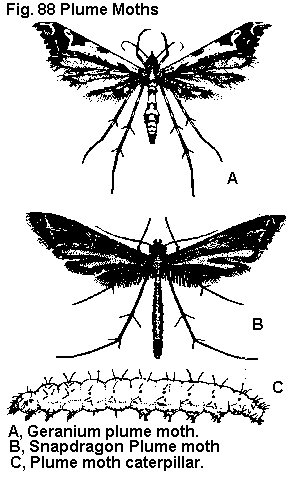 Fig. 88. Plume moths. Geranium plume moth,
Platyptilia pica Walsingham; Snapdragon plume moth, Stenoptilodes
antirrhina (Lange), Pterophoridae, LEPIDOPTERA
Fig. 88. Plume moths. Geranium plume moth,
Platyptilia pica Walsingham; Snapdragon plume moth, Stenoptilodes
antirrhina (Lange), Pterophoridae, LEPIDOPTERA Return to: CFREC Home Page
Adult - The wings of plume moths are lobed and fringed with long setae. The forewings are bilobed, the lobes starting 2/3 from the wing base. The hindwings have three lobes. These moths hold their wings out horizontally forming a sort of T shape or obliquely. The moths move the wings up and down erratically. Plume moths have slender bodies and legs. They are white or brownish with a wingspan from 15 to 25 mm. The members of this genus are very closely related, and it is often difficult to determine which species is involved by adult specimens.
Egg - Some plume moths produce eggs that have distinct reticulations. In general, the eggs are oval or elliptical, glossy, white or pale yellow and about 0.4 mm long.
Larva - Larvae of plume moths can be recognized by their slender, stalk-like prolegs and their setae with swollen tips. Full-grown larvae are about 10 mm long and tapered at both ends.
Pupa - Usually the pupae are not in cocoons. They vary from very light to brown, are angulate, and are about 10 mm long.
 Fig. 88. Plume moths. Geranium plume moth,
Platyptilia pica Walsingham; Snapdragon plume moth, Stenoptilodes
antirrhina (Lange), Pterophoridae, LEPIDOPTERA
Fig. 88. Plume moths. Geranium plume moth,
Platyptilia pica Walsingham; Snapdragon plume moth, Stenoptilodes
antirrhina (Lange), Pterophoridae, LEPIDOPTERA
A, Geranium plume moth.
B, Snapdragon plume moth.
C, Plume moth caterpillar.
Distribution - Geranium plume moths and snapdragon plume moths appear to be most active in California although they have been found in southeastern greenhouses that have received cuttings from California.
Host Plants - Snapdragon and geranium are the two groups of ornamental plants most frequently attacked by plume moths in the Southeast.
Damage - Plume moth larvae mine the leaves and feed externally on leaves, buds, and flower parts.
Life History - There are more than 40 species of plume moths of the genus Platyptilia occurring in the United States. Two of the economically important members of this genus are the geranium plume moth and the snapdragon plume moth. Eggs are deposited singly any place on the plants, but are usually laid on newly forming flowers or on the underside of leaves of terminal young growth. Hatching occurs in 2 to 3 weeks. Young larvae mine in leaves and later burrow into the stem, petioles, flowers, or seed pods. It takes 3 to 5 weeks for the larvae to develop through four instars. The caterpillars emerge to form pupae that hang upside down on the plant. The adults are weak fliers and usually remain on or near the host plant. The moths are most active during the early evening. If hibernation is necessary, it is the adult stage that overwinters; however, the plume moths are not well adapted for hibernation or aestivation.
Geranium cuttings should be inspected upon arrival for plume moth caterpillars. A pyrethroid dip with a labeled pesticide should give adequate control of plume Moth caterpillars without damaging the cuttings or affecting rooting percentage. For specific rates and chemical control recommendations, see the current Cooperative Extension publications on ornamental plant pest management.
Reference to University of Florida/IFAS Pest Control Guides